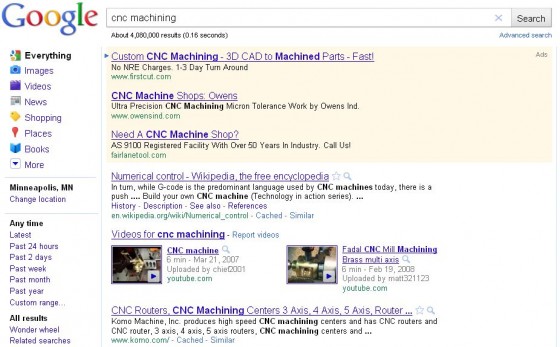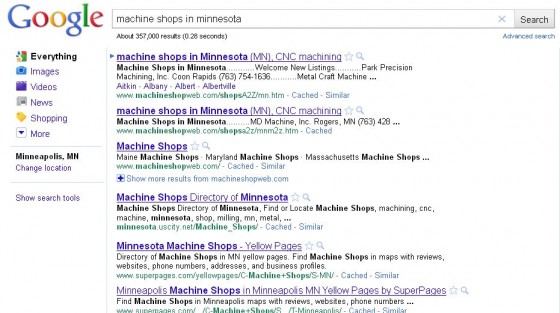SEO Basics is the eCreative IM blog column written for SEO beginners just learning the basics of search engine optimization. You can find all our SEO Basics articles by browsing the SEO Basics Archive or find the specific tips you’re looking for in our SEO Tips & Guides page.
In the land of search engine optimization, we often talk about “Above the Fold” search engine results and the difference between above the fold and below the fold.
Above the fold refers to a search engine results page ranking on the first page that is visible without having to scroll down.
We know from search result research that most users will click on the first Google result, and much fewer will click on the second, etc. When you get to the second page, the results are phenomenally lower still. But there is also a big breaking point between being above the fold and below the fold.
While many users will just click on the first Google result as long as it looks relevant, there is another group that will quickly scan over the title & description for the first several results and choose the one that sounds most relevant. Because of this being above the fold yields substantially better traffic than being just one position below the fold.
The Above the Fold Rank is Constantly Changing
The reason we use the term above the fold (which, incidentally, originates from newspapers and referring to articles on the front page and above the point where the newspaper folds in half) rather than refer to a specific ranking, is that the position of the “fold,” or the point where users have to scroll down, is not constant.
In part it depends on the resolution of a users monitor and the size of their browser window. Someone using a Netbook with it’s tiny 15″ screen isn’t going to see as many results without scrolling as will someone on their desktop with a 25″ screen. Someone browsing on a mobile phone will see less still.
But in addition to hardware issues, individual searches also change where that above the fold mark is. Highly competitive terms will have three pay per click ads up at the top. There might be image results, or video results, or a Google shopping feed. When we’re talking about above the fold, we’re specifically talking about standard organic search engine rankings, so things like these all push those organic rankings down lower on the page.
Here are a couple of examples:


The constantly shifting position of the fold as Google intermixed more and more different media into their search engine results (and social search results are coming as well) means that those very competitive terms are more and more difficult to rank above the fold. In some ways this means that they’re less attractive — after all, if I can’t get in the top two results for CNC Machining, I’m below the fold. My share of clickthroughs for being position 3 is going to be much smaller than my share of clickthroughs for being number 3 on my Machine Shops in Minnesota search.
On the other hand, this does give clever SEO professionals an extra way to sneak into those top results — by being sure to include relevant videos, properly tagged images, and shopping feeds you have an alternate route to the top of the Google results. And since most companies are not yet taking advantage of the very important video marketing, the competition for those positions are much, much lower.






